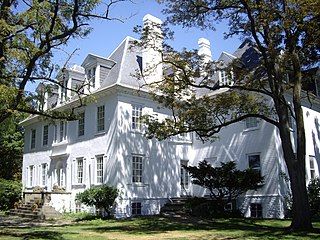
Clermont is a town in Columbia County, New York, United States. The population was 1,965 at the 2010 census. The name of the town is French for "Clear Mountain", in reference to the mountain views in the town.

Livingston is a town in Columbia County, New York, United States. The population was 3,628 at the 2020 census. The town is named after its founding father.
Robert Livingston was the third and final Lord of Livingston Manor and a member of the assembly for the manor from 1737 to 1790. He was also U.S. Secretary of Foreign Affairs from 1781–1783.

Robert Livingston the Elder was a Scottish-born merchant and government official in the Province of New York. He was granted a patent to 160,000 acres of land along the Hudson River, becoming the first lord of Livingston Manor.

Philip Livingston was an American merchant, politician and slave trader from New York City. He represented New York at the October 1774 First Continental Congress, where he favored imposing economic sanctions upon Great Britain as a way of pressuring the British Parliament to repeal the Intolerable Acts. Livingston was also a delegate to the Second Continental Congress from 1775 to 1778, and signed the Declaration of Independence, thus becoming one of the Founding Fathers of the United States.

William Alexander, also known as Lord Stirling, was a Scottish-American major general during the American Revolutionary War. He was considered male heir to the Scottish title of Earl of Stirling through Scottish lineage, and he sought the title sometime after 1756. His claim was initially granted by a Scottish court in 1759; however, the House of Lords ultimately overruled Scottish law and denied the title in 1762. He continued to hold himself out as "Lord Stirling" regardless.
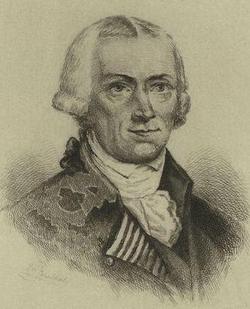
Walter Livingston was an American merchant, lawyer and politician.
Livingston Manor was a 160,000-acre (65,000 ha) tract of land in the Province of New York granted to Robert Livingston the Elder during the reign of George I of Great Britain.

The Clermont State Historic Site, also known as the Clermont estate, the Clermont Manor or just Clermont, is a New York State Historic Site in southwestern Columbia County, New York, United States. It protects the former estate of the Livingston family, seven generations of whom lived on the site over more than two centuries.

Thomas Tillotson was an American physician and politician.
Robert Le Roy Livingston was a United States representative from New York.

The Hudson River Historic District, also known as Hudson River Heritage Historic District, is the largest Federally designated district on the mainland of the contiguous United States. It covers an area of 22,205 acres extending inland roughly a mile (1.6 km) from the east bank of the Hudson River between Staatsburg and Germantown in Dutchess and Columbia counties in the U.S. state of New York. This area includes the riverfront sections of the towns of Clermont, Red Hook, Rhinebeck and part of Hyde Park. This strip includes in their entirety the hamlets of Annandale, Barrytown, Rhinecliff and the village of Tivoli. Bard College and two protected areas, Margaret Lewis Norrie State Park and Tivoli Bays Unique Area, are also within the district.

The Livingston family of New York is a prominent family that migrated from Scotland to the Dutch Republic, and then to the Province of New York in the 17th century. Descended from the 4th Lord Livingston, its members included signers of the United States Declaration of Independence and the United States Constitution. Several members were Lords of Livingston Manor and Clermont Manor, located along the Hudson River in 18th-century eastern New York.

Wildercliff is a privately owned estate on Mill Road, in Rhinebeck in Dutchess County, New York. It was the home of noted Methodist circuit rider Freeborn Garrettson and his wife, Catherine Livingston, of the Clermont Livingstons. It may be included in the Hudson River Historic District.
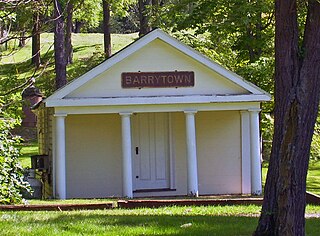
Barrytown is a hamlet within the town of Red Hook in Dutchess County, New York, United States. It is within the Hudson River Historic District, a National Historic Landmark, and contains four notable Hudson River Valley estates: Edgewater, Massena, Rokeby, and Sylvania.

Teviotdale is a historic home located at Linlithgo in Columbia County, New York. It was built about 1773 by Walter Livingston (1740–1797). It was added to the National Register of Historic Places in 1979.

The Roeliff Jansen Kill is a major tributary to the Hudson River. Roeliff Jansen Kill was the traditional boundary between the Native American Mahican and Wappinger tribes.
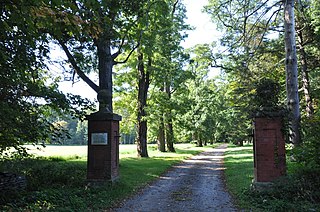
Grasmere is a national historic district and estate located at Rhinebeck, Dutchess County, New York. It was built by Janet Livingston Montgomery, widow of General Richard Montgomery.
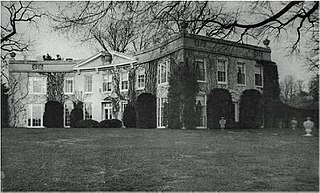
Locusts on Hudson is a 76-acre (31 ha) estate in Staatsburg, New York, owned by hotelier André Balazs. The property has both an operating farm and manor. The historic estate now acts as an events venue due in part to its naturalistic landscape. A portion of the produce and animals of the farm are sent to The Standard Grill, The Standard, High Line Hotel, and Narcissa at The Standard, East Village Hotel, also owned by Balazs, in New York City, New York. Designed by architect John Churchill in the early 1940s, the estate's manor is of a neo-baroque style. Beside the manor, there are many grey and white antique remnants of dairy barns on the property.
Ferncliff Farm was an estate established in the mid 19th century by William Backhouse Astor Jr. (1829–1892) in Rhinebeck, New York. Not far from his mother's estate of Rokeby, where he had spent summers, Ferncliff was a working farm with dairy and poultry operations, as well as stables where he bred horses. In 1902, his son and heir John Jacob Astor IV commissioned Stanford White to design a large sports pavilion, which included one of the first indoor pools in the United States. The sports pavilion was later converted into a residence for his son, Vincent Astor.


















